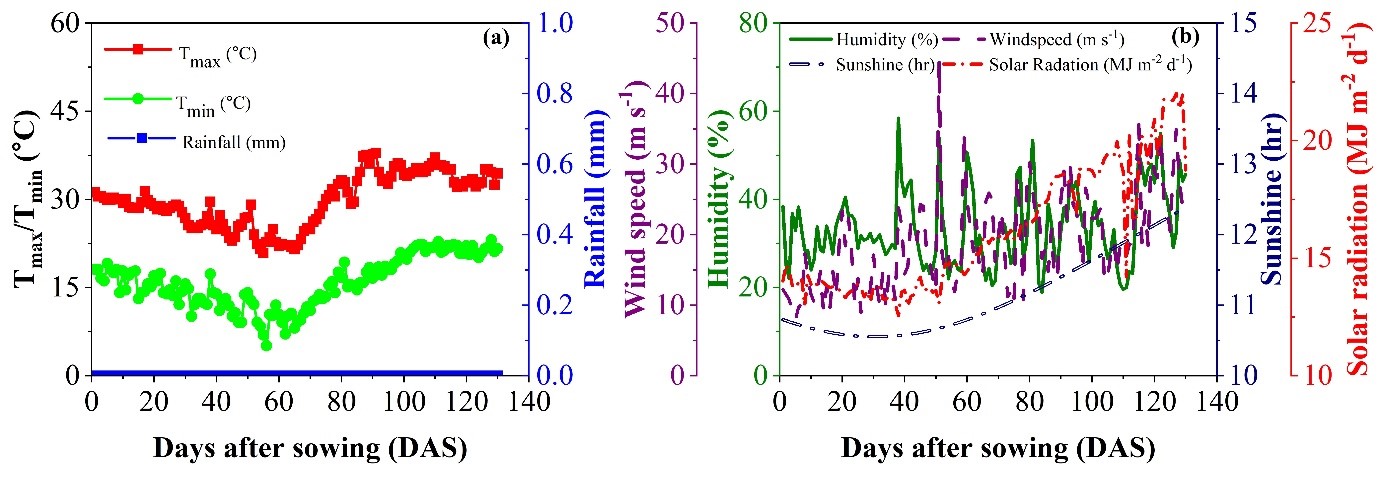Optimizing Irrigation Strategies for Wheat in Sindh: Balancing Yield, Water Use Efficiency, and Water Footprint
Keywords:
Furrow Irrigation Methods, Irrigation Levels, Water Use Efficiency, Water Footprint, Wheat YieldAbstract
Water scarcity jeopardizes food production in arid and semi-arid regions, making efficient irrigation crucial to enhance water use efficiency (WUE) and sustain crop yields. Thus, a study was conducted to measure the impact of three furrow irrigation methods (FIM) [conventional furrow irrigation (CFI), alternate furrow irrigation (AFI), and fixed furrow irrigation (FFI)] combined with three different irrigation levels (IL) (100%; 80%, and 60% crop water requirement) on crop growth, yield attributes, grain yield, biomass, WUE, and blue water footprint of wheat crop during the Rabi season 2022-2023 in Tandojam, Hyderabad. Treatments were arranged in a randomized complete block design (RCBD) with three replications. Results illustrated that FIMs and ILs had a substantial (P < 0.05) effect on the crop growth, yield attributes, grain yield, and biomass, while their interaction had no substantial effect (P > 0.05). Compared with AFI and FFI, CFI had substantially higher grain yield (11.1-15.3%) and biomass (5.0-12.3%), lower WUE (1.23-31.86%), and higher blue water footprint (41.7-46.7%). Whereas AFI compared with CFI saved water by 39.13%, improved WUE by 31.86%, and lowered blue water footprint by 29.86%, with a moderate yield decrease (13.22%) at 80% crop water requirement. Therefore, AFI combined with an 80% crop water requirement is recommended as an efficient irrigation strategy for wheat in water-scarce areas.


















